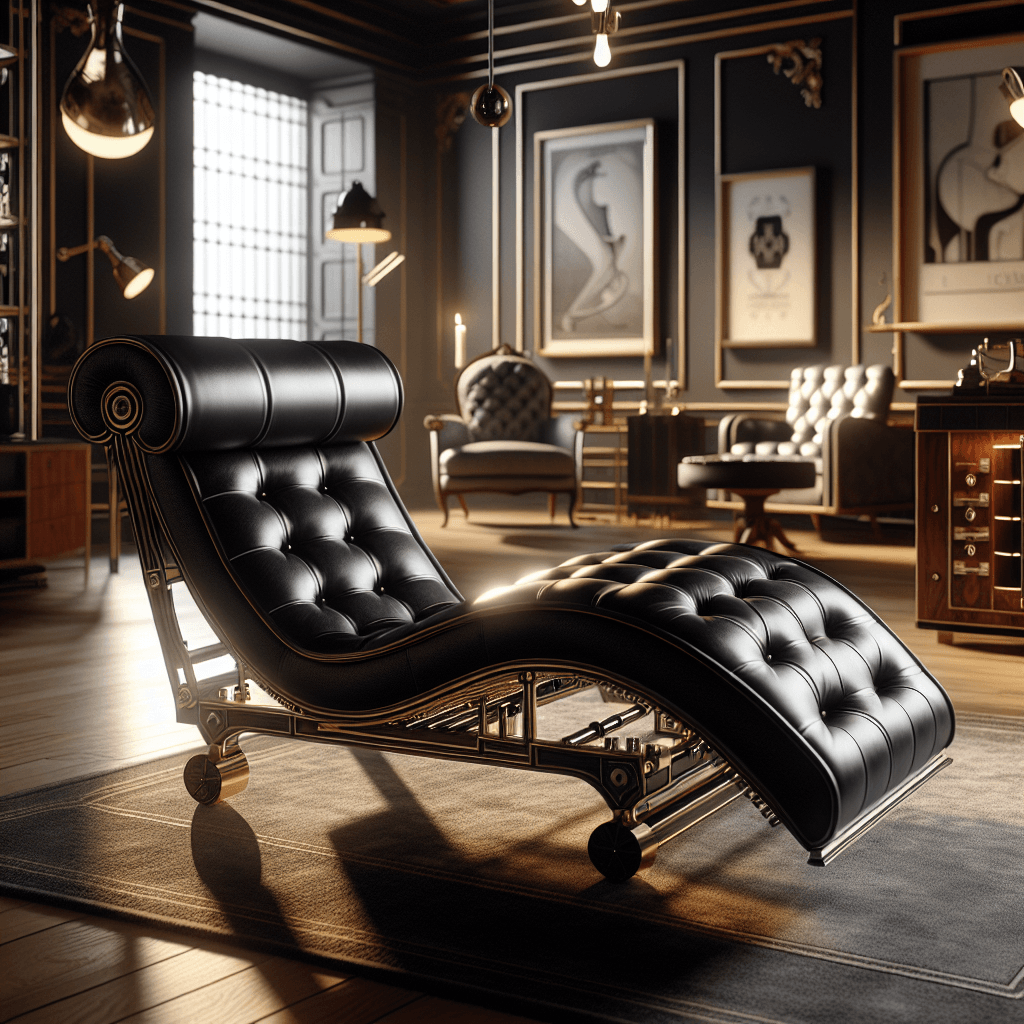How this revolutionary recliner became a symbol of modern design
The LC4 Chaise Lounge is not merely a piece of furniture; it is an emblem of modern design and a testament to the ingenuity of Le Corbusier, one of the pioneers of modern architecture and furniture design.
- The Design Conception and Historical Context
- Aesthetic Elements and Ergonomic Design
- Cultural Impact and Symbolism in Modern Design
- Craftsmanship and Materials
- Collectibility and Legacy
- Final Reflections on the LC4 Chaise Lounge
The Design Conception and Historical Context
Le Corbusier, born Charles-Édouard Jeanneret, was a visionary Swiss-French architect who dramatically shifted the landscape of 20th-century architecture and furniture design. The LC4 Chaise Lounge, created in 1928 in collaboration with Charlotte Perriand and Pierre Jeanneret, was revolutionary. It was designed as part of a series for the Salon d’Automne, a platform that showcased avant-garde design and art in Paris.
The LC4 was born from the idea of creating furniture that is both functional and reflective of the machine age, emphasizing clean lines and a departure from traditional decorative arts. The chaise lounge was specifically crafted to offer an optimal relaxation experience, aligning with the contours of the human body without compromising on style or aesthetic appeal.
- Collaborative Genius: The collaboration between Le Corbusier, his cousin Pierre Jeanneret, and Charlotte Perriand brought together a melding of minds that were at the forefront of modern design.
- Innovative Design: They envisioned a kind of furniture that was both a work of art and a functional piece that enhanced the human experience of space and form.
Aesthetic Elements and Ergonomic Design
The LC4 Chaise Lounge is distinguished by its sleek, flowing lines and lack of ornamentation, adhering to Le Corbusier’s belief that “the house is a machine for living.” The form of the LC4 is designed to mirror the natural curve of the human spine, providing unparalleled comfort and support. Its base, which allows the chair to move from a sitting to a reclining position, showcases both form and function, a hallmark of Le Corbusier’s designs.
The visual impact of the LC4 lies in its simplicity and its bold industrial aesthetic. It features a polished steel frame that cradles the body, paired with a mattress that can be upholstered in leather or a variety of fabrics, enhancing its versatility and appeal in different interior settings.
- Ergonomic Precision: The chaise lounge is crafted to support the body’s natural curves, promoting relaxation and comfort.
- Visual Harmony: Its design complements modern architectural elements, making it a favorite in homes and offices that emphasize contemporary decor.
Cultural Impact and Symbolism in Modern Design
The LC4 Chaise Lounge quickly transcended its functional identity to become a symbol of modern luxury and comfort. It has been featured in numerous films, advertisements, and photo shoots, often associated with sophistication and modern elegance. Its presence in various media solidified its status as an icon of modernist design.
Moreover, the LC4 has been part of important museum collections around the globe, including the Museum of Modern Art in New York, which speaks to its cultural significance and enduring appeal. It not only represents a shift in the design paradigm but also reflects the broader cultural movements of the 20th century towards minimalism and functionalism.
- Symbol of Modernism: The LC4 is celebrated not just as a piece of furniture but as a representation of the modernist ethos.
- Cultural Icon: Its widespread recognition and inclusion in prestigious collections underscore its impact on design and culture.
Craftsmanship and Materials
The construction of the LC4 Chaise Lounge is a testament to the craftsmanship and attention to detail that Le Corbusier and his collaborators invested in their furniture designs. The use of high-quality materials such as steel for the frame and premium leather or fabric for the upholstery ensures durability and longevity.
The techniques involved in the manufacturing process require a high level of skill, particularly in the precision of the steel bending and the upholstery’s tailored fit. Each piece is a result of meticulous craftsmanship, embodying the fusion of industrial production and artistic design.
- Durable Materials: The choice of materials reflects a commitment to quality and sustainability.
- Artistic Craftsmanship: The manufacturing process combines technical precision with artistic aesthetics.
Collectibility and Legacy
The LC4 Chaise Lounge remains highly sought after by collectors and design enthusiasts around the world. Its timeless design continues to inspire contemporary furniture designers, and its historical significance makes it a valuable piece for any collection.
The legacy of the LC4 is evident in its continued production and popularity, decades after its initial release. It stands as a testament to Le Corbusier’s vision and the enduring appeal of modernist design principles.
- Enduring Appeal: The LC4 continues to be celebrated for its innovative design and cultural significance.
- Inspirational Legacy: It remains a source of inspiration for modern furniture designers and enthusiasts alike.
Final Reflections on the LC4 Chaise Lounge
The LC4 Chaise Lounge by Le Corbusier is more than just a piece of furniture; it is a piece of history, a reflection of modernist ideals, and a beacon of design innovation. Its creation marked a significant moment in the history of furniture design, redefining notions of comfort and aesthetics in the modern age.
For those passionate about luxury, craftsmanship, and design heritage, the LC4 is not only a symbol of artistic and functional excellence but also a profound statement in the ongoing dialogue between form and function.
For further exploration of Le Corbusier’s work and the significance of the LC4 Chaise Lounge, consider visiting authoritative sources such as the Foundation Le Corbusier.



